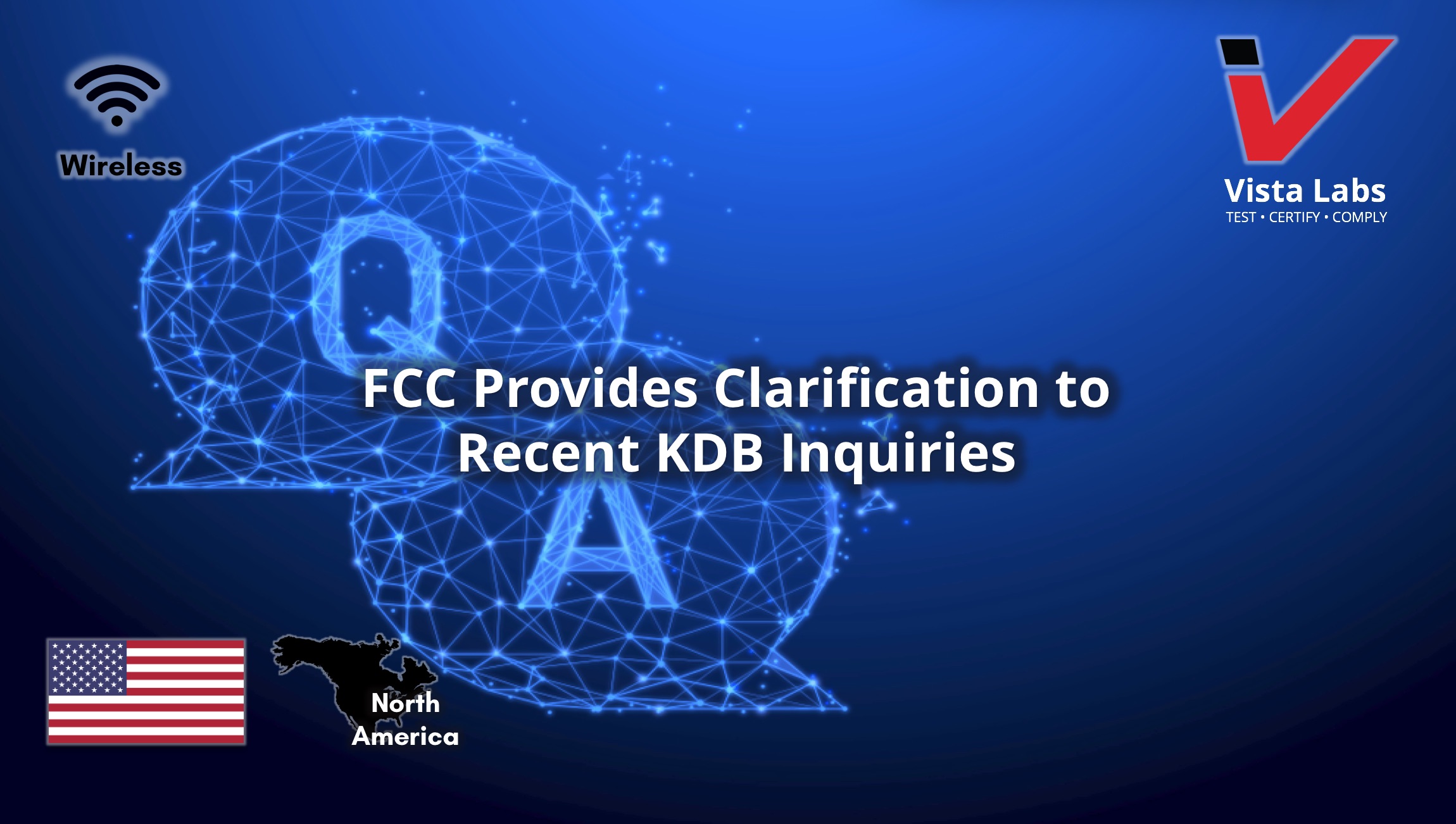The Federal Communications Commission (FCC) of the United States answers and clarifies questions received by TCBs, test labs, and manufacturers this year regarding general guidance.
Modular Approval Power Supply Regulation
Q: Module does not contain an integrated circuit for power supply regulation, but its firmware contains a functionality which disables the rf transmitter when the power supplied to the module is out of the allowed range. Does this satisfy the requirement?
A: The objective of requiring power regulation is to ensure that the module remains compliant when power varies within different host environments. If you have achieved this through firmware as part of your design then then you can consider it as power regulation for single module approval. You as the responsibly party and engineering authority need to make the determination that the operation is as good as or better than a hardware implementation.
15.255 Grant Power Listing
Q: Section 15.255 (operation within the band 57-71 GHz) includes both a radiated output power limit (15.255(c)) and also a conducted output power limit (15.255(e)). Please clarify which level you would prefer to have listed in the line entry on the grant of certification, and whether or not you would want the other level listed, or referenced, in the Grant Remarks.
A: OET Lab has not provided specific uniform guidance to TCBs about power listing on grants for 15.255. From quick survey of EAS records, conducted power predominantly has been listed in line entries. Also (partial) similarity with 15.247 indicates that conducted power may be better for uniform practices.
At present additional listing of EIRP in “free-form grant comments” field is optional; at least until if and when TCBs are notified otherwise by OET Lab. (e.g. via added KDB pub. for power listings on grants, e.g. similar to 634817 about freqs. on grants).
15.231 timing over multiple channels
Q: If the Tx button is pressed once, the key transmits on channel 1 (DC appr. 43 % within the first 100ms) then it switches to channel 2 and transmits for additional 35ms in the next 100ms. Both channels are in the 433 MHz band. Can be the duty cycle calculation done per channel or must it be done together over all channels? If we must do it over all channels, the pulse train is longer than 100ms. In this case FCC 15.35 requires that you shift your 100ms observation window to the period with the maximum emission. In this case, this would result to worst-case duty cycle over both channels of appr 70%, which means less power reduction.
A: In general, you shift the 100 mS time frame and include channels within the measurement window. If the channels are far apart such that only one channel is within the measurement window, then you just take the worst- case time on the one channel, assuming the pulse train on the channel is greater than 100 mS.
Schematics when re-authorizing a module
Q: A device integrates a certified Wi-Fi module. The applicant wishes to file for a new FCC ID for the entire host including the module. A complete new set of test reports has been provided for the host plus module. Are schematic diagrams of the module required to be filed in this new application, or is it possible to reference the module’s original certification for this exhibit?
A: The schematics are required. An option is to have the TCB try to work out a third party confidential request between the new grantee and the original grantee.
Changes to Product Description on Grant
Q: An applicant is requesting that the product description listed on the grant for a Wireless Access Point be changed for marketing purposes. Please confirm if you can set the application into audit mode so that this may be accomplished.
A: The FCC only allows changes of the described nature to be done within 30 days of the grant date.
Q: We have a request for a c2pc to change the description on the grant for marketing purposes. The original grant does not have the correct description of the device certified. Please advise if you can put the application into audit mode so that we can update the grant description to assist this applicant instead of filing a c2pc application.
A: Only changes pertinent to the grant are allowed. Changes to the product description are not considered pertinent to the grant.
Re-use of SAR Data
Q: Is SAR data re-use permitted? If yes, is the spot check for the worst one of each mode OK based on the change from Dual SIMs to Single SIM?
A: SAR reuse is not allowed in any condition.
Parts List required for licensed device applications?
Q: While a Parts List (BOM) has traditionally been submitted in applications for licensed devices, it does not appear to be specifically referenced in Section 2.1033 ((b) or (c)). Is the Parts List exhibit no longer required for licensed device applications?
A: The parts list exhibit requirement is merged together with the tune up procedures exhibit requirement. It is an either-or option depending on what the specific rule section allows/requires. Certification requirements are in 2.1033. When a block diagram or schematic is required, a separate parts list may be required to complete the block diagram or schematic.
For instance, the schematic must be complete, and the parts need to be identified. If the schematic has only the component designation such as R7 or U103, a separate parts list or BOM to show R7- 50 ohms or U103- microprocessor xxx is needed to complete the schematic.



